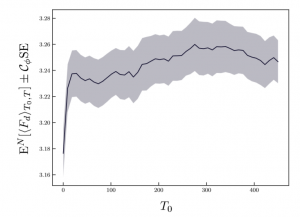WP3 Space-time parallelization
Objectives
The aim of this work package is to develop the algorithms and to implement them with the goal of extracting parallelism in time dependent problems. Because of the sequential nature of time evolution this is a difficult objective and, apart from mathematically sound algorithms, careful implementations are required. Most of these algorithms are extensions of algorithms already available in 3D.
Tasks
Task 3.1: Parallel in time methods for tensor product space-time meshes
This task consists of implementing a parallel in time method tailored for a particular structure of the space-time discretization, a tensor product of the (possibly anisotropic) space discretization and a uniform time discretization. This structure permits to extract parallelism in space (already available in the codes) and in time (to be developed here) independently.
Task 3.2: Nonlinear Domain decomposition preconditioners
This task requires implementing algorithms for the solution of nonlinear problems locally on each processor in an abstract manner so they can be invoked from a domain decomposition code. In this way nonlinear solvers act on distributed data as a preconditioner for the whole nonlinear algorithm (which also requires global checkpointing) to reduce the number of iterations it requires.
Task 3.3: Ensemble based parallelism
In this task, the dynamic task scheduling developed in WP4 will be exploited to perform a bunch of shorter simulations instead of long ones thus extracting parallelism in the time evolution. The main issue here is the development and implementation of an algorithm to detect the initial transient (to be discarded in the statistical treatment and thus is the
extra cost to be paid to extract parallelism) and the generation of good initial conditions to minimize it.



Task 3.4: Implementation of temporal statistical methods
Although the statistical treatment of time series is well established in the literature, a careful implementation is required to make the ensemble approach more efficient and thus deserves its own task. The two (well known) problems are the detection of statistical steady states and the choice of optimal sampling frequencies.
Task 3.5: Calibration for wind engineering problems
In this task a calibration of the chosen method will be performed to make this trade-off favorable in the class of wind engineering problems considered in this project.
Task 3.6: Calibration of parallel space-time algorithms for turbulent flows
The extraction of parallelism in the space-time context is made at the price of extra flop/s and it only pays when the number of iterations required is such that this trade-off is favorable. In the case of turbulent flows this is delicate aspect and a careful calibration of the nonlinear algorithms is required.

